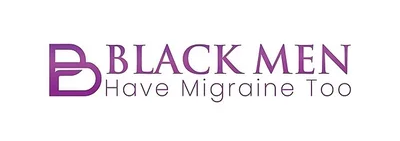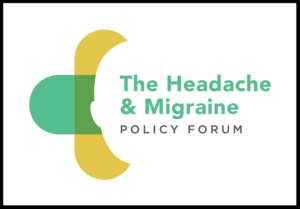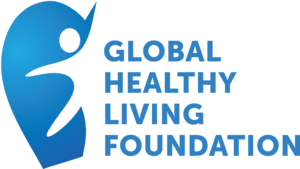A Win For Migraine Patients
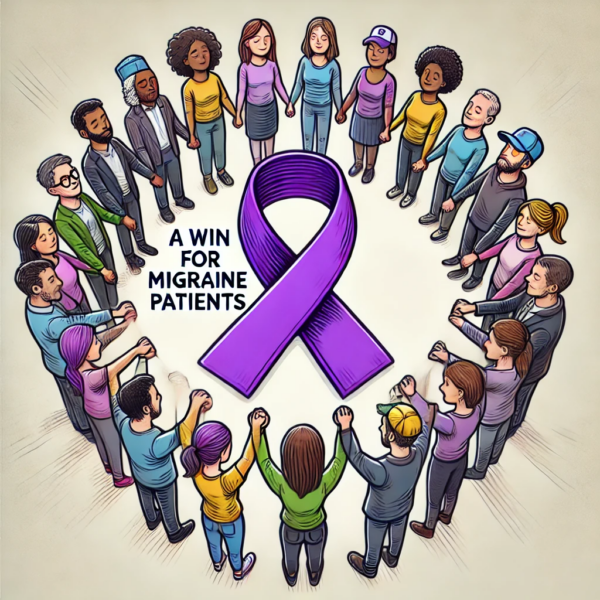
In March of 2024, the American Headache Society (AHS) released an updated position statement emphasizing the importance of calcitonin gene-related peptide (CGRP)-targeting therapies in the prevention of migraine. This new guidance reflects a significant advancement in migraine treatment, proposing these therapies as a first-line option alongside traditional treatments.
Historically, first-line migraine preventive therapies were developed for other medical conditions and later adopted for migraine treatment. These treatments often face poor adherence due to efficacy and tolerability issues. In contrast, CGRP-targeting therapies were specifically developed for migraine, and supported by extensive pre-clinical and clinical evidence demonstrating the crucial role of CGRP in migraine pathogenesis. Despite their transformational impact, CGRP-targeting therapies have not yet been widely adopted as first-line treatment, causing patients to endure step therapy protocol by insurance companies.
Understanding Step Therapy
Step therapy is a protocol used by insurance companies that requires patients to try and fail on one or more less expensive or generic medications preferred by their health plan before they can access the FDA approved migraine specific treatment. This approach is intended to control costs by encouraging the use of cheaper treatments first. However, it can delay access to the appropriate migraine specific treatment for patients, causing frustration, and delaying sometimes 2-6 months with potentially worsening health outcomes.
Why this Matters: A Win For Patients and Providers
In a significant development, the updated statement from the American Headache Society, supported by major patient organizations, has influenced health plans such as Cigna and Express Scripts to expand access to CGRP-targeting therapies. This change means approximately 30 million more individuals will have access to these treatments without the need for prior step therapy.
This shift marks a significant enhancement in access to effective migraine preventive therapies, promising better outcomes for millions of migraine patients.
We the undersigned organizations applaud the work of American Headache Society and encourage all health care providers to read the consensus statement.
Take a Deeper Dive Into The Issue
Talking Head Pain Podcast
A Win for Migraine Patients: Increased Access for New Targeted Therapies
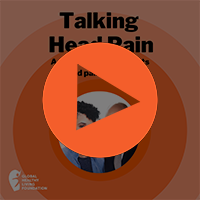

View Transcript
Narrator 00:00
Be inspired, supported, and empowered. This is the Global Healthy Living Foundation Podcast Network.
Joe Coe 00:10
Welcome to “Talking Head Pain,” the podcast that confronts head pain, head on. I’m your host, Joe Coe, and I’ve been a migraine patient for over 20 years. Have you ever felt that it was hard to get the medication that your doctor prescribed? Have you been frustrated with denials, forced to jump through hoops and take medications that you and your doctor don’t think would work for you? That might hopefully change based on the work that the neurologists at the American Headache Society and patient organizations like GHLF are doing. I’m here today with Dr. Ailani and Dr. Tepper, both headache specialists, researchers, and world renowned neurologists. I’m going to speak with them about how some insurance providers and pharmacy benefit managers might make it easier for you to get access to these newer migraine medications. Really exciting news that we’re hearing!
Joe Coe 00:57
Dr. Ailani, I’m gonna start with you. Were you surprised when you learned about this change? Can you share who it might impact and what the actual changes and how it came about?
Dr. Ailani 01:06
Yes, absolutely. So, I will say let’s first talk about what this change actually is. The American Headache Society has updated its consensus statement basically stating that the society generally believes that CGRP (calcitonin gene-related peptide) blocking therapies should be first line for preventive treatment. And this is based on what now is a much longer time period of safety and efficacy data. And also some data that really compares our traditional oral therapies that have been around a long time but have not been created specifically for migraine. And there have been some now head-to-head studies comparing anti CGRP therapy to these traditional agents and showing that these anti CGRP therapies are better tolerated, patients stay on them longer. And because of that, they tend to do better over time. So, there’s now enough data that really pushed us to restate that we think we should be first line and insurance companies and patient organizations really took this up and made some changes. And some of these companies that work with payer groups that are the ones that make decisions on what kind of medications are going to be on your formulary, and we call these pharmacy benefit managers, and particularly Express Scripts has made a decision that they’re going to allow us to use these anti CGRP therapies for prevention more as first line without having to go through other steps to receive them. This still means that they require prior authorization. But, it takes away this whole idea that we have to try traditional oral generic medications that weren’t created for migraine specific reasons that might carry a lot of side effects. It’s pretty big news and I would say I was really surprised that happened this quickly. I thought, and actually, Dr. Tepper and I are well prepared to go in and educate our payer groups. And we’re in the process from the American Headache Society to really start to become more involved in order to educate our payers and educate why these medications are important and safe and good for our patients to be able to have access to early on. So, I thought we were looking at one to two years from now, before this would happen. We’re only several months into this publication. So yeah, I’m surprised and I’m really happy as well.
Joe Coe 03:13
Yeah. And I could just share as a patient that it’s really awesome to hear that providers are taking time out of practicing medicine. I guess it’s awesome in one way, but sad in another, that you have to fight so hard to get us on the right treatments, but hopefully this will make it easier and we have to be hopeful. We do know that payers and insurance companies and pharmacy benefit managers play a lot of games with us sometimes, so we’re gonna stay vigilant, but a win is a win, and we’re going to take this and celebrate it. Dr. Tepper, turning to you. What does this advancement of care mean for patients?
Dr. Tepper 03:47
Well, let’s back this up and talk about how we got to this stage, which I think is a really great first step. And actually even before the first step, as Dr. Ailani said, the American Headache Society took a position that was based on evidence that patients should not have to go through a series of non-specific old fashioned treatments that were laden with side effects and generally didn’t work in order to get to treatment that was developed, specifically, for migraine and which did not carry with it the side effect burden. And the American Headache Society put out a statement filled with evidence, in April, and encouraged payers and insurance companies to take away these obstacles to care. These were simply obstacles. As you said, Joe, it’s somewhat games that these organizations played, in order to prevent people from getting to the care they needed, and for us as practitioners for matching patient need to treatment. What insurance companies generally do in the United States is to use what are called pharmacy benefit managers or PBMs that manage what is covered in term of treatments, what’s not, what is necessary for prior approval, and how patients can access these care. And what has happened in the exciting news is that one of the big three PBMs in the U.S. announced within this week that they’re no longer going to require that people with migraine have to have tried a variety of older medicines, and had those medicines fail, and have that all be documented in what are called step edits, but which really are obstacles to appropriate treatment. As Dr. Ailani said, we will probably still have to do prior approvals, but it won’t require us doing a long and laborious checklist, and people having to go through all of these steps before they can get to appropriate treatment. This is really great news, this is really fantastic! And now we need to turn our attention to those payers that have not yet recognized that times have changed.
Joe Coe 05:58
100% agree! And I know our organization will stay vigilant on that through our 50 State Network of Advocates and all the policy work that we do to make sure that everyone gets the right treatment at the right time in their patient journey. Because we know, and you know better than I do as doctors, that treating migraine earlier reduces the likelihood of disability and chronification of migraine. So, we’re doing things proactively with these policies to ensure that we live healthier, happier lives as migraine patients. So, it just makes sense to us. Unfortunately, what makes sense sometimes doesn’t translate into what happens in the real world. And we’re really glad that folks are taking the evidence and actually using it to make a positive change. So, Dr. Ailani, how does this change the dialogue between you as a healthcare provider and a patient, or your colleagues and their patients?
Dr. Ailani 05:58
I’ll say, when I first heard the news, the first thing that came to my mind was, “oh, man,” that patient I saw yesterday, I had this very difficult conversation of we have to try two generic medications first, and then go on what you saw on television, and actually came in to see me and wanting to discuss. I don’t really have to have that kind of conversation again, with certain payers. And that also means that I have to know, and the patient has to know, who their pharmacy benefit manager is. So, how are we going to have these discussions with patients where sometimes it’s already a struggle, understanding this is your insurance. And then this is who your, maybe, 90 Day supplier of meds are. That’s usually the fastest way I get to who’s their pharmacy benefit manager? And then if it’s one of the ones that I know, might be part of this decision, if I could potentially try offering them a CGRP targeted therapy first line. And is this going to work? Because this is a hope, this is what we’re told, but it’s still kind of a risk. What if it doesn’t go through? What if you know, we’re told July 1st, and it’s actually middle of July? And I give it a try on someone? And I’m told “oh, no, they still have to try X, Y, or Z” because that policy hasn’t quite kicked in, or they have a certain other type of plan. So, it doesn’t quite answer that question about the conversation with the patient. What it is telling you is my anxiety as someone who’s been doing this for over a decade, and has seen the frustration of my patients. I don’t want to let them down, at the same time, I want to give them what they want for themselves, and what they’re going to be able to stay on and has the least side effects, and they believe in. Their belief in their treatment, to me is the most important thing. And so, a lot of the conversation has to center about this understanding that there’s a possibility you might be able to get this treatment, if you have this particular right type of plan. That’s a hard conversation to have with a patient. Everyone thinks they have the best insurance. And we’re kind of trained to think that right? “I have the best insurance, they always allow me to get everything.” And I feel like “oh, I wish every insurance was the best, but actually, most insurances, they’re not so great.” And it’s just about the type of disease you have in the diagnosis and what they want to pay for. And it’s kind of heartbreaking when the patient first realizes that, “oh, maybe my insurance isn’t that great, because they’re not going to allow me to get this treatment my doctor says is the best.” So, I have to come up with this way of having this very complex conversation and not let the patient feel let down by something. That their insurance is letting them down, that I’m letting them down, that we’re able to cover a backup, in case this doesn’t work in the first few months. So, I think we’re really in this process of trying to figure out how to navigate this conversation. I think six months from now, it’s going to be very simple. Here’s all your options. “This has the least side effects, this might have some more, what do you think?” I can tell you most of our patients are going to choose the left side effect option. Right now, we’re in a very testy time period of really hoping this is an accurate situation, having to figure out how we find this, you know, PBM for these certain patients and how do we educate our patients and understanding if it’s not true, this is what a good backup is and don’t lose hope.
Joe Coe 09:49
Yeah, really, really important stuff there. I know from our position as a nonprofit, talking with legislators and stakeholders around what even a PBM does and what role they have or shouldn’t have in our health care system is a complicated discussion. I never thought about it as reducing it to your 90 day supplier. But really what is their purpose, and it’s basically to make money, I mean to boil it down for the insurance company. And that is something that doesn’t incentivize, necessarily, the best treatment. It could in this case, they’re doing the right thing. Congratulation, let’s follow through and see if it works. And we hope that a podcast like this will help those patients that you might not have more than a couple of minutes to talk to, to better understand the issue and manage expectations and know that we’re not going to give up fighting. Your providers aren’t organizations like GHLF, and the National Headache Foundation and the American Migraine Foundation and the Alliance for Headache Disorders Advocacy, and all the groups that do amazing work every day are not going to stop fighting to make sure that you have access. So, Dr. Tepper, what would success look like in your mind based on this change in care?
Dr. Tepper 11:05
I want patients to be able to get the appropriate medication that their practitioner thinks they need for their migraine. That’s success, without a lot of restriction, preferably without prior approval. I want to know that when I write a particular treatment for a patient, after the patient and I have discussed it, after we have shared decision making, after the two of us work out a plan that the patient is comfortable with and wants to do, that we can actually execute that and the person who I’m talking to can go to the pharmacy or put in the mail order and get the treatment that the two of us have decided on. That is success! And I want the entire payer system for the United States to recognize that migraine is serious, that migraine results has had significant impact for people, and that it is treatable, and that people’s lives can be turned around with appropriate treatment, with minimal side effects for the most part. And it’s an opportunity to change people’s lives to change the society to make a huge impact. All we need is payers to recognize that the times have changed, and that they need to get with the program, and recognize that they have to cover these therapies that are appropriate, that are superior to the old treatments, that have less side effects than the old treatments, that people will take. That’s my goal for the future. And I was lecturing about this in Europe recently, in Ireland. And I said, this is not a matter of whether this is going to happen. This is a matter of when this gradually rolls out across the United States and across the world. And this is where we’re going to be. People are going to have their lives transformed by migraine specific therapy.
Joe Coe 13:02
Dr. Ailani, just to summarize, to wrap up some of the critical talking points, or takeaways, or top line things that patients should know about this.
Joe Coe 13:02
I love that! And I wanted to circle back to a point that you talked about prior authorizations. It’s not lost on me that Cigna is in a lawsuit right now based on using an algorithm and AI to auto deny 300,000 prior authorizations. We’re working against the system that doesn’t have our best interest as patients in mind. So, we have to be really understanding of that. The people that work at Cigna find people, the people that we’re going to call to try to get our stuff covered. They’re doing their job, they’re nice people, I’ve spoken to them in my insurance company, you can get very frustrated, but there are people, so we’re not bashing the people. The companies don’t necessarily have our best interest in heart. So, it was really exciting when we saw that this change is happening. On one end, “rah rah, this is amazing,” on the other, I’m like, “Well, what are they going to do to make it more complicated?” Or what are they going to do with, like, we saw with copay cards and then copay accumulator adjusters, and all the ways that companies do things to maximize profit and minimize care. So, right now I’m celebrating them. Express Scripts, don’t let us down, get with the program like Dr. Tepper said, and thank you!
Dr. Ailani 14:28
Yeah, so top line points: (1.) anti CGRP therapies for prevention of migraine have been recommended as first line treatment from the American headache society. (2.) The payers are starting to pay attention, (3.) and Express Scripts and Cigna have decided that you no longer will need to go through many hoops, and they’re going to put this as first line treatment without having to go through what’s called step therapy. You won’t have to try and have failed other oral or other types of preventive medication to have this first. You might still need a prior authorization, and you will have to have the right type of pharmacy benefit and the right type of insurance. So, it’s really important when you go to see your healthcare provider and say you are interested in first line therapy of an anti CGRP medication, that you know what your pharmacy benefit management plan is. It’s not what’s on that card that you have in your wallet with the insurance logo on it, you can call your insurance company, they can help you figure that out. But walking in with that knowledge is going to be extremely helpful to you and your health care provider to making steps to get that medication to you quickly. If you’re not sure, there’s no way the provider can really figure that out without you knowing. So, really coming in with that knowledge is going to save a lot of steps.
Joe Coe 15:46
Amazing! And Dr. Tepper, two questions to wrap this up. What should patients do if their insurance company or pharmacy benefit manager denies their medication? And an additional question that I thought about as I was listening to you both: how should patients educate their doctor if they’re not a headache specialist, and they might not know about the consensus statement in this change? Like, what should we tell our community, if they are not getting covered?
Joe Coe 16:10
100% agree! I would be really upset if I didn’t say this. And I use this term payer. It’s not necessarily the best term and I wanted to flag it. The employer, and you brought up talk to your employer, the employer is the payer, we pay the insurance companies to provide a service and we use this language like they’re doing us a favor. They’re providing a service that either we pay for, the government pays for, or our employer pays for. So, we’re actually the payers, but it’s shorthand, I use it. But I would be remiss if I didn’t give my little dig around that language. Really appreciate the discussion. Is there anything that we didn’t cover that you feel we really need to highlight?
Dr. Tepper 16:10
Those are really good questions! Let’s start with the practitioner. Because if the practitioner is not aware of the position statement from AHF, that’s a good place to begin. And a patient can download it, the copyrights lifted, and it was the senior author was Andrew Charles, and it was published in the journal “Headache”, in April. So, everybody can access that, through a library. And I would encourage patients to get a hold of that document, and then they can show it to their practitioner. But let’s say you have an enlightened practitioner, and they have hit the brick wall of a payer, the other two PBMs that have not done this are CVS Caremark and Optum, which is part of UnitedHealthcare. So, United and CVS Caremark have not removed the step edits, or most patients, while Cigna and Express Scripts have. So, if your PBM is CVS Caremark, and almost certainly if it’s Optum, United, they will require the step edits. You may as a patient have to go through those step edits, in order to get to appropriate treatment. But, I think I would write to the PBM and to your payer, and point out that Cigna and Express Scripts has lifted these obstacles to treatment, that the American Headache Society has recommended that they not be done anymore. And then the last piece of this is if you have an HR person at your employment, I would let the HR person know that your particular PBM is restricting treatment that the National American Headache Society has said they should not be doing.
Dr. Ailani 18:32
I think I just want to echo what Stew (Dr. Tepper) was saying. And just remind all of our patient listeners that you do have the strongest voice! My patients often think that we as the physician do. No, not anymore, you are the payer for the insurer. And if the insurance company isn’t allowing you the treatment that you believe is the best for you, you have every right and everything behind you to appeal their decision. And now we have authored and really stood behind a very strong article that you can actually Google search and download for free at the American Headache Society’s most recent position paper published in 2024, there are three of these. That’s why we keep mentioning look for the one for 2024. That’s the one that will tell you that we think that first line should be these anti CGRP treatments. And when you write an appeal and you include the reference to that article, it’s going to be very hard for them to give you an answer that opposes what a national organization is standing behind, but your doctor doesn’t have the power that you do. I suggest to remember that!
Dr. Tepper 19:37
I would just like to close on a note of hope. This is such a fantastic time for patients to have these therapies that are marvelous, that are life altering, and that have minimal to no side effects for most people, is the greatest experience as a practitioner and a partner in healthcare with my patients. I cannot tell tell you how excited I am, and how I look forward to helping people, and encouraging all the system to make these therapies available for people, when appropriate. It’s going to be a fantastic ride and I really look forward to the next several year!
Joe Coe 20:16
Thank you for listening to this special episode of “Talking Head Pain,” the podcast that confronts head pain, head on. If you have any questions, or thoughts, or suggestions for us, we’d love to hear them. You can send us an email at [email protected] If you enjoyed this episode, please give it an honest five star rating write a positive review and spread the word by sharing it with your friends and family. I’m Joe Coe and I’ll see you next time!
Narrator 20:43
Be inspired, supported, and empowered. This is the Global Healthy Living Foundation Podcast Network.




